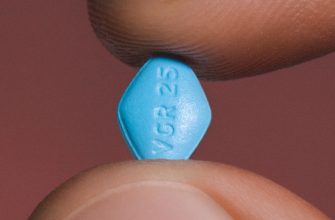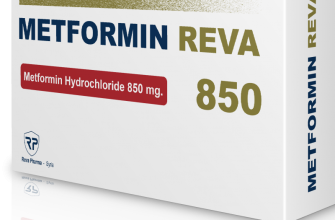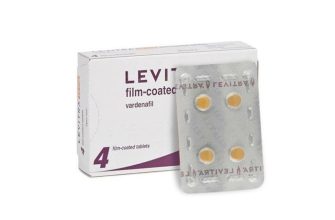Begin with a careful assessment of the patient’s renal function, using creatinine clearance calculations to guide dosing. This is paramount for safe and effective digoxin therapy.
For adults with normal renal function, a typical starting dose is 0.125-0.25 mg daily. Always monitor serum digoxin levels closely, aiming for a therapeutic range of 0.8-2.0 ng/mL. Remember, individual responses vary significantly.
Adjust the dosage based on the patient’s response and serum digoxin levels. Frequency of monitoring depends on the clinical situation, but regular checks are vital, especially during the initial phase of treatment and after any dosage changes. Closely observe for signs of toxicity, including nausea, vomiting, and arrhythmias.
Administer digoxin orally, preferably at the same time each day, with or without food. For patients with impaired renal function, significantly reduce the initial dose and subsequent maintenance doses. Consult relevant clinical guidelines for specific recommendations on dosage adjustments based on creatinine clearance. Intravenous administration requires close monitoring and should be performed by healthcare professionals.
Always consult updated clinical guidelines and drug references for the most current dosage recommendations. Patient-specific factors influence optimal digoxin dosing, emphasizing the importance of individualized treatment strategies.
- Digoxin Dosage and Administration
- Monitoring Digoxin Levels
- Administration Methods and Considerations
- Potential Drug Interactions
- Determining the Initial Digoxin Dose
- Adjusting Digoxin Dosage Based on Therapeutic Response
- Digoxin Administration Routes and Methods
- Oral Administration: Practical Considerations
- Intravenous Administration: Emergency Use Only
- Managing Potential Adverse Effects of Digoxin
- Special Considerations for Specific Patient Populations
- Renal Impairment
- Cardiac Conditions
- Hypothyroidism
- Hyperthyroidism
- Pediatric Patients
- Dosage Adjustments Based on Creatinine Clearance
- Concurrent Medications
- Patient Education and Medication Adherence
- Understanding Potential Side Effects
- Managing Your Medication
- Dietary Considerations
Digoxin Dosage and Administration
Digoxin dosage depends heavily on patient factors, including age, weight, renal function, and the presence of other medical conditions. Always follow your doctor’s prescribed dosage and administration instructions precisely. Typical starting doses for adults range from 0.125 to 0.25 mg daily, but this is a guideline, not a prescription. Your physician will determine the appropriate starting dose and titration schedule based on your individual needs.
Monitoring Digoxin Levels
Regular blood tests to monitor digoxin levels are crucial for safety. Therapeutic levels typically fall between 0.8 and 2.0 ng/mL, though this range can vary. Higher levels increase the risk of toxicity, while lower levels may indicate insufficient therapeutic effect. Report any signs of digoxin toxicity–such as nausea, vomiting, visual disturbances, or irregular heartbeat–to your doctor immediately.
Administration Methods and Considerations
Digoxin is usually administered orally, often as a tablet or capsule. Take the medication at the same time each day, with or without food, as instructed. Avoid grapefruit juice, as it can affect digoxin absorption. Intravenous administration is used in specific circumstances, such as emergency situations requiring rapid onset of action. Your healthcare provider will explain the correct administration method for your situation. Children and elderly individuals usually require adjusted dosages due to differences in metabolism and renal function. Always confirm all dosages with a pharmacist before administering.
Potential Drug Interactions
Many medications can interact with digoxin, potentially altering its effects. These interactions can lead to increased or decreased digoxin levels in the blood. Examples include diuretics, verapamil, and amiodarone. Be sure to inform your doctor about all medications, supplements, and herbal remedies you are taking. This is especially important to prevent dangerous drug interactions. This information aims to assist and does not substitute professional medical advice. Always consult your doctor or pharmacist for any questions or concerns regarding your digoxin treatment.
Determining the Initial Digoxin Dose
The initial digoxin dose depends heavily on the patient’s renal function and the indication for treatment. Always consult the most up-to-date clinical guidelines and consider individual patient factors.
For patients with normal renal function (creatinine clearance >50 mL/min) treating atrial fibrillation, a typical starting dose is 0.125 mg daily. For heart failure, a common starting dose is 0.125 mg daily, but may be adjusted lower based on patient factors.
- Atrial Fibrillation: 0.125 mg daily is a frequently used starting point. Closely monitor the patient’s response and adjust accordingly.
- Heart Failure: 0.125 mg daily is a common initial dose, but patients with reduced renal function may require a lower starting dose.
For patients with impaired renal function, dose reduction is necessary. Use a creatinine clearance-based dosing chart to accurately determine the appropriate initial dose. Consider the following guidelines:
- Creatinine Clearance 30-50 mL/min: Reduce the initial dose by approximately 50%.
- Creatinine Clearance <30 mL/min: Significant dose reduction is necessary. Consult specialized resources and cautiously approach dosing.
Always monitor serum digoxin levels to optimize therapy and avoid toxicity. Therapeutic levels generally range between 0.5 and 2 ng/mL, but this can vary depending on the patient and clinical situation. Regular electrocardiogram (ECG) monitoring is also critical.
Remember: This information is for guidance only. Always refer to established clinical practice guidelines and exercise clinical judgement when determining the initial digoxin dose and subsequent monitoring.
Adjusting Digoxin Dosage Based on Therapeutic Response
Regularly monitor serum digoxin levels and the patient’s clinical response. Target digoxin levels generally range from 0.5 to 0.9 ng/mL, although this can vary depending on the patient’s condition and individual response. Higher levels may increase the risk of toxicity.
Bradycardia or other signs of toxicity, such as nausea, vomiting, or visual disturbances, necessitate immediate dosage reduction. Contact your physician immediately. A reduction of 12.5% to 25% of the current daily dose is often appropriate. Closely monitor the patient following dose adjustment.
Insufficient therapeutic response, indicated by persistent symptoms of heart failure despite adequate digoxin levels, may require an increase in dosage. However, proceed cautiously, increasing the dose in small increments (12.5% to 25%) at intervals of several days, and closely monitoring serum digoxin levels and the patient’s clinical status. Electrocardiogram (ECG) monitoring is vital during dosage adjustments.
Renal function significantly affects digoxin clearance. Reduce the dosage or increase the dosing interval in patients with impaired renal function. Consult specific guidelines for dosage adjustments in these cases.
Always correlate digoxin level with clinical symptoms. A normal digoxin level doesn’t guarantee therapeutic effect, and a slightly elevated level doesn’t automatically indicate toxicity. The patient’s overall clinical presentation is paramount.
Document all dosage adjustments, including the rationale, serum digoxin levels before and after adjustments, and the patient’s response. This detailed record aids in future dosage management.
Digoxin Administration Routes and Methods
Digoxin is primarily administered orally, usually as tablets or capsules. Accurate dosing is paramount; always carefully follow prescribed instructions. Liquid formulations exist, offering flexibility, particularly for patients struggling with swallowing pills. Intravenous administration is reserved for emergencies requiring rapid digoxin effect, such as severe heart failure exacerbations.
Oral Administration: Practical Considerations
Oral digoxin absorption can vary slightly based on the formulation and individual factors. Consistent timing of doses helps maintain stable serum levels. Avoid taking digoxin with antacids or high-fiber foods, as these can impair absorption. Always swallow the medication whole; do not crush or chew tablets unless explicitly instructed by your doctor or pharmacist. Regular monitoring of blood digoxin levels is crucial to optimize treatment.
Intravenous Administration: Emergency Use Only
Intravenous digoxin requires careful monitoring by healthcare professionals. It should only be administered by trained personnel. Slow intravenous infusion is the standard method, avoiding rapid bolus injection to minimize the risk of adverse effects. Continuous electrocardiogram (ECG) monitoring is necessary to detect potential arrhythmias. Post-IV administration, close observation for signs of toxicity is vital.
Managing Potential Adverse Effects of Digoxin
Monitor patients closely for signs of digoxin toxicity. Early detection is key. Look for symptoms like nausea, vomiting, loss of appetite, and visual disturbances (blurred vision, yellow-green halos).
Regularly check serum digoxin levels. Maintain levels within the therapeutic range (typically 0.5-2 ng/mL, though this can vary based on individual factors). Frequent monitoring is especially crucial during initiation of therapy and dosage adjustments.
Potassium levels are vital. Hypokalemia increases the risk of digoxin toxicity. Ensure adequate potassium intake through diet or supplementation as needed. Regularly monitor potassium levels.
Assess for cardiac arrhythmias. Digoxin can cause various arrhythmias, including bradycardia and atrial fibrillation. ECG monitoring provides valuable insight into the heart’s rhythm and allows for timely intervention. Adjust dosage or consider alternative therapies as necessary.
Educate patients on potential side effects. Provide clear instructions on recognizing symptoms and what steps to take if they occur. Encourage immediate medical attention should any concerning symptoms appear.
Adjust dosage carefully. Dosage modifications should be made gradually, closely monitoring patient response and serum digoxin levels to minimize adverse effects. Consider individual factors including age, renal function, and concurrent medications.
Always review the patient’s medical history. Consider potential drug interactions. Certain medications can affect digoxin metabolism and increase the risk of toxicity.
Note: This information is for educational purposes only and does not substitute professional medical advice. Consult a healthcare professional for guidance on digoxin management.
Special Considerations for Specific Patient Populations
Adjust digoxin dosage cautiously in older adults due to decreased renal function. Lower starting doses and careful monitoring are necessary to prevent toxicity. Regularly assess creatinine clearance to guide dosage adjustments.
Renal Impairment
Reduce digoxin dosage in patients with impaired renal function. Use a creatinine clearance-based dosing regimen. Closely monitor serum digoxin levels and adjust the dose accordingly to avoid accumulation and toxicity.
Cardiac Conditions
Patients with atrial fibrillation may require different digoxin dosing than those with other conditions. Consider the severity of the condition, the patient’s response, and other medications when adjusting the dosage. Regular ECG monitoring is crucial.
Hypothyroidism
Digoxin’s effects may be amplified in patients with hypothyroidism due to reduced metabolic clearance. Initiate treatment with lower doses and monitor closely for signs of toxicity.
Hyperthyroidism
Conversely, in hyperthyroidism, digoxin metabolism is accelerated, potentially requiring higher doses for efficacy. Close monitoring of therapeutic response and serum levels is vital.
Pediatric Patients
Digoxin dosing in children differs significantly from adult dosing. Dosage is weight-based, requiring precise calculations. Careful monitoring for signs of toxicity, such as arrhythmias, is imperative.
Dosage Adjustments Based on Creatinine Clearance
| Creatinine Clearance (mL/min) | Dosage Adjustment |
|---|---|
| >80 | Standard adult dose |
| 50-80 | Reduce dose by 25-50% |
| 30-50 | Reduce dose by 50-75% |
| <30 | Consult a specialist; significant dose reduction or alternative therapy may be needed. |
Concurrent Medications
Many medications interact with digoxin. Drugs like amiodarone, verapamil, and quinidine can increase digoxin levels, potentially leading to toxicity. Always review the patient’s medication list for potential interactions and adjust the digoxin dose accordingly. Regularly monitor serum digoxin levels.
Patient Education and Medication Adherence
Regularly check your pulse. Count your pulse for one full minute before taking digoxin. Report any pulse rate below 60 beats per minute to your doctor immediately.
Understand your digoxin dose and schedule. Your doctor will provide a personalized plan. Strictly adhere to this plan. Never adjust your dosage without consulting your physician.
Understanding Potential Side Effects
Watch for signs of digoxin toxicity, including nausea, vomiting, diarrhea, loss of appetite, vision changes (blurred or yellow vision), and irregular heartbeat. Contact your doctor immediately if you experience these symptoms.
Managing Your Medication
Keep your medication in a safe, dry place, away from children and pets. Use a pill organizer to help you remember to take your medication on time. Attend all scheduled follow-up appointments with your doctor to monitor your progress and adjust your treatment as needed. Inform your doctor about all medications and supplements you are taking, including over-the-counter drugs and herbal remedies, to prevent potential interactions.
Carry a card or wear a medical alert bracelet indicating you take digoxin. This is crucial information for emergency medical personnel.
Dietary Considerations
Maintain a consistent potassium intake. Discuss with your doctor or a registered dietitian about a balanced diet and appropriate potassium levels. Avoid drastic changes to your diet without consulting your healthcare provider.










